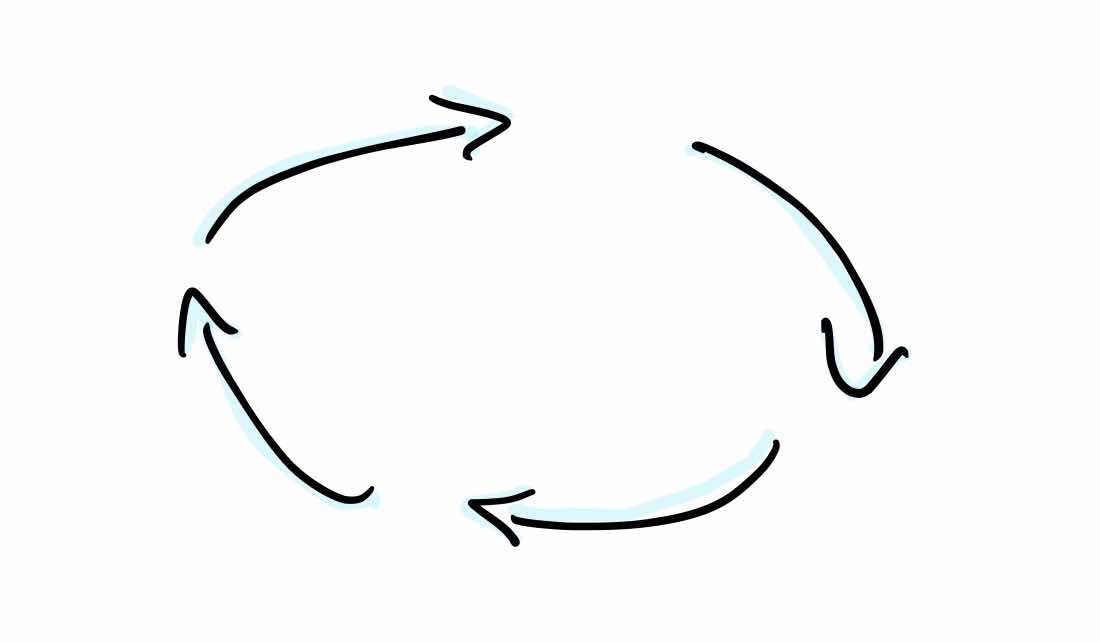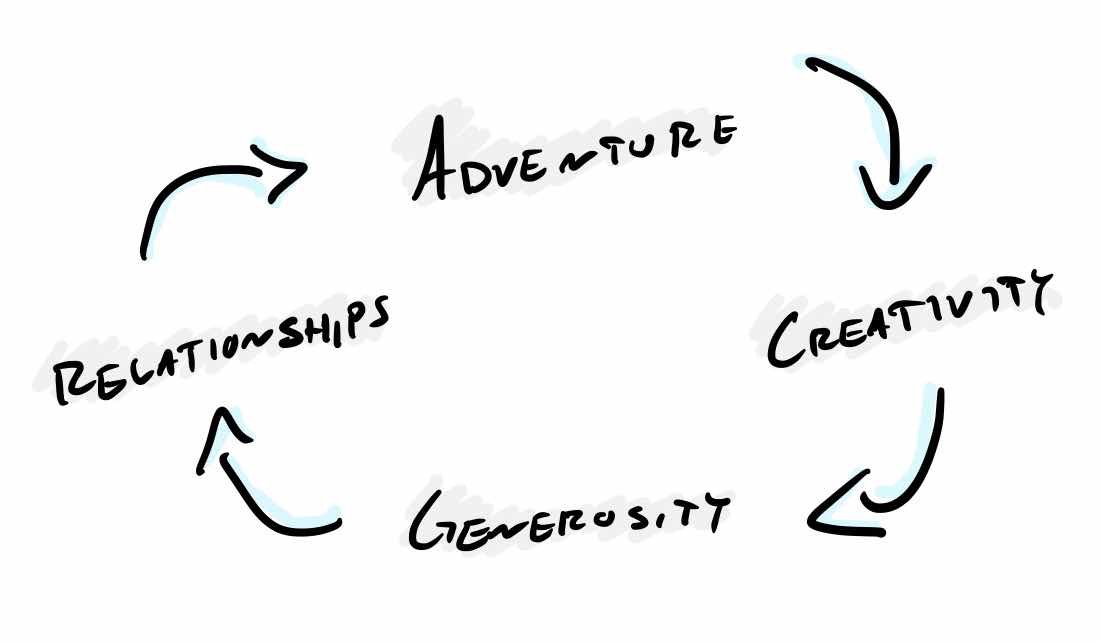The past few days I’ve had the privilege of talking one-on-one with a handful of Focus Course members, and it has been so great.
One of the questions I like to ask is this:
“What would your ideal day look like?”
The answers are, of course, always different. But there are usually three “themes” that I find to be the same across the board for most folks.
Those three themes are:
- SELF: Time for personal interests and self-care.
-
WORK: Time for deep, meaningful work.
-
OTHERS: Time for meaningful relationships and to be present and engaged with loved ones.
For most folks, these are the three big buckets that make up the bulk of their ideal day.
What about you? What would your ideal day look like?
What’s holding you back from implementing and living your ideal day?
Sometimes it’s merely that you haven’t thought about it. You haven’t taken the time to consider HOW you would like to spend your day.
But there is a catch.
Is your ideal day truly your ideal day?
It’s one thing to have spent a day that, on paper, would sound idealic. A day that others would be envious of. A day free from any stress, rigor, or conflict.
Your ideal day should have two components
- It must be sustainable.
- It must move you forward toward health.
Let me explain.
An ideal day needs to be sustainable in that you can repeat it. You want to be able to have consistently great days. Not just a good day here or there.
So an “ideal” day must be realistic, not just a daydream.
Secondly, your ideal day needs to move you forward toward health.
If you were to have 365 ideal days in a row, then after that “perfect year” you would hope to:
- have grown in your most important relationships;
- be a healthier person; and
- have grown in your skills at work; etc..
Unfortunately, you cannot just make some adjustments to your calendar over the weekend and then start Monday living out your ideal day.
But you CAN start small.
You can pick one thing to begin doing that you can KEEP doing and that will lead you toward health.
- What would your ideal day look like?
-
What about it would help it be sustainable?
-
What about it would be moving you toward health?
It is okay — in fact, it’s encouraged — to start small and slowly build momentum.
How to Create Transformation
The whole idea behind imagining your ideal day is that it helps you to think of transformation.
I just recently began reading a small 40-page booklet by Jim Collins called Turning the Flywheel, and it’s about building momentum.
On the first page, Collins shares about a time when he was consulting with Jeff Bezos and the executive team at Amazon.
Check out what he has to say about momentum:
I taught them about “the flywheel effect” that we’d uncovered in our research. In creating a good-to-great transformation, there’s no single defining action, no grand program, no single killer innovation, no solitary lucky break, no miracle moment. Rather, it feels like turning a giant, heavy flywheel. Pushing with great effort, you get the flywheel to inch forward. You keep pushing, and with persistent effort, you get the flywheel to complete one entire turn. You don’t stop. You keep pushing. The flywheel moves a bit faster… Then at some point—breakthrough! The flywheel flies forward with almost unstoppable momentum.
Once you grasp how to create flywheel momentum in your particular circumstance and apply that understanding with creativity and discipline, you get the power of strategic compounding. Each turn builds upon previous work as you make a series of good decisions, supremely well executed, that compound one upon another. This is how you build greatness.
This is what a flywheel looks like:

Do you ever feel like you are pushing with great effort? Just trying to slowly get momentum? Wondering when — or even if — there will be a breakthrough?
I love this. I was even sharing it with my team just yesterday in our Basecamp chat.
Consider this your daily dose of motivation to just keep moving forward.
There is no magical moment…
No solitary lucky break…
No single defining moment…
There is the compounding, slowly and steady forward progress.
Which is good news, actually! Because, while you can’t create or control those magical moments or those lucky breaks, you CAN commit to show up every day and focus on doing the right actions and habits for your life.
And you CAN keep pushing forward with persistent effort.
. . . . . .
Consistency to move the flywheel is also known as a focused life.
The power of a focused life is that it creates transformation and build greatness.
Greatness that is based on YOUR vision and YOUR values.
Think of your personal flywheel as the compounding actions you take that move you forward with your life’s vision.
My friend, Barrett Brooks, recently wrote about how to define your own flywheel.
In defining your own flywheel it can help to ask yourself some questions:
- Who are the most important people in your life, and why?
- What are a few of the core values that influence most of the decisions you make?
- What activities or actions in the past have brought about significant breakthrough for you?
- What do your closest friends and family members say that you are good at?
- Are there actions or behaviors in your life that you regret or that led to failure or disappointment?
- What are some of the most significant memories of your life over the past year that could be repeated in the future?
With those answers in mind, consider what do your successes, your strengths, your values, and your disappointments tell you about the key components to your own flywheel?
As I was working on this, I considered the components of my own flywheel.
This is still a work in progress, but here is the first draft. The components for me are:
- Embrace spontaneity, risk, and adventure within my business and with my family.
- Make consistent time to do my best creative work.
- Give extravagantly and generously to the causes and people I believe in.
- Pursue deep relationships.
Pretty much all of the goals and values of my life revolve around creative work, relationships, and generosity. These are not individual, stand-alone components — they are each interconnected. Momentum in one area will bring about momentum in the others as well.
When simplified, my flywheel could look something like this:

Each component leads to the next. As I allow myself to choose adventure and risk, it leads to creative output, which, in turn, will empower me to be generous towards others, which, in turn, fuels my relationships, which, in turn, allow me to choose adventure and risk…
When your personal flywheel is moving forward, then you are on the path toward accomplishing your goals. AND, you find a joy in the journey because you are doing the things you love. And your ideal day is a key part of that.